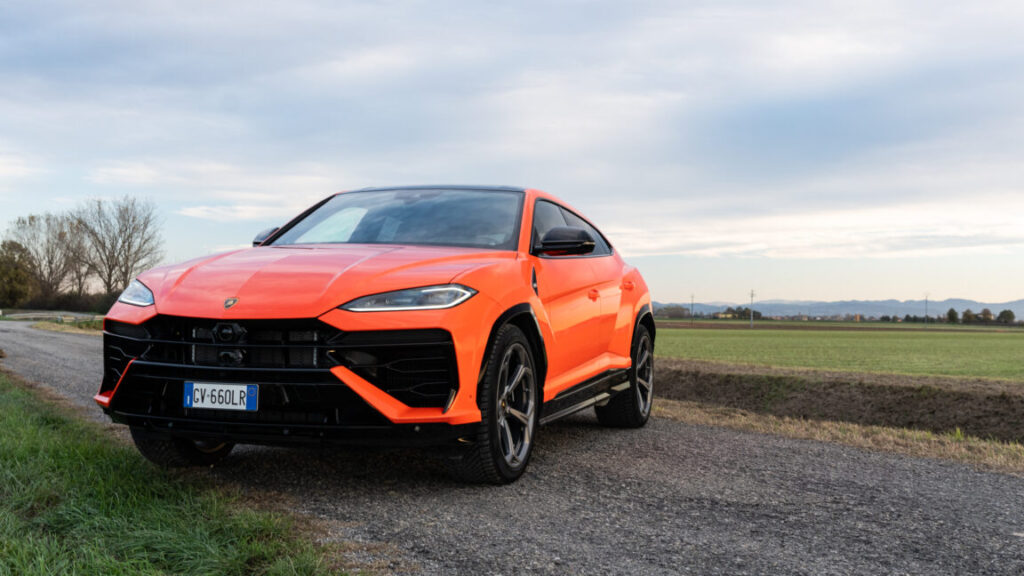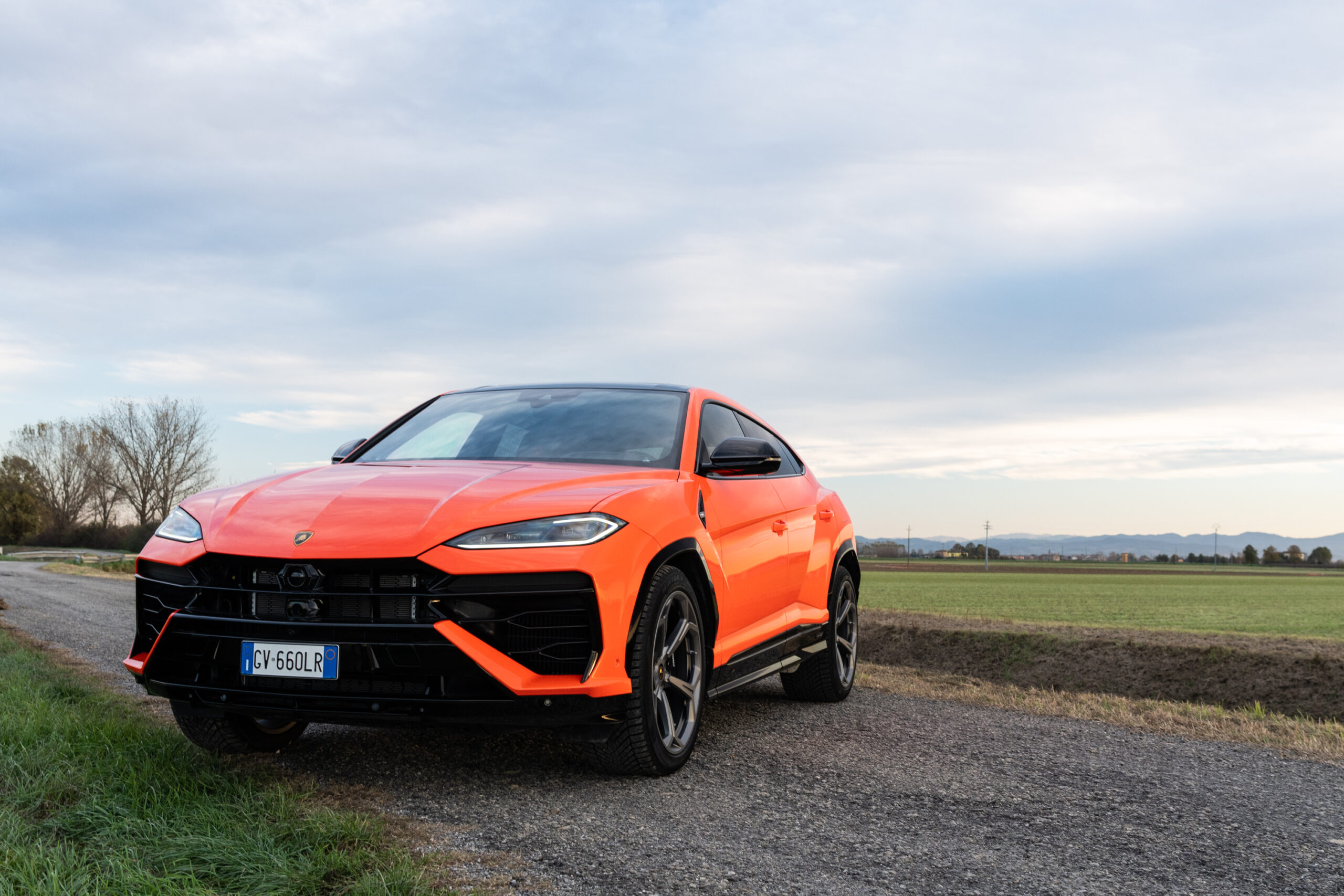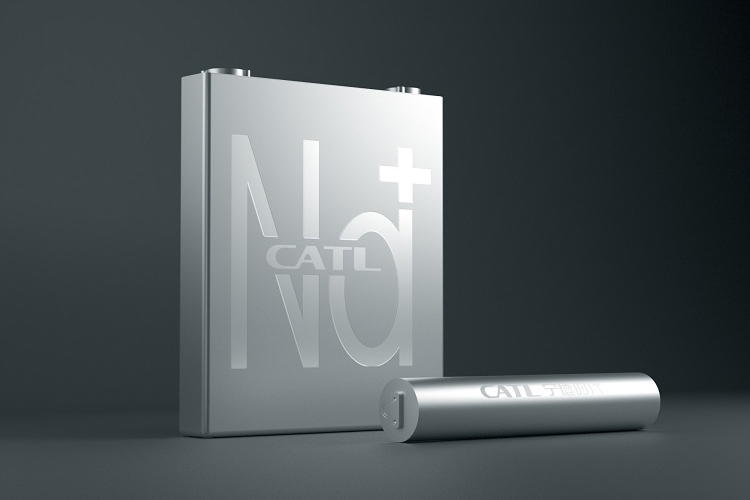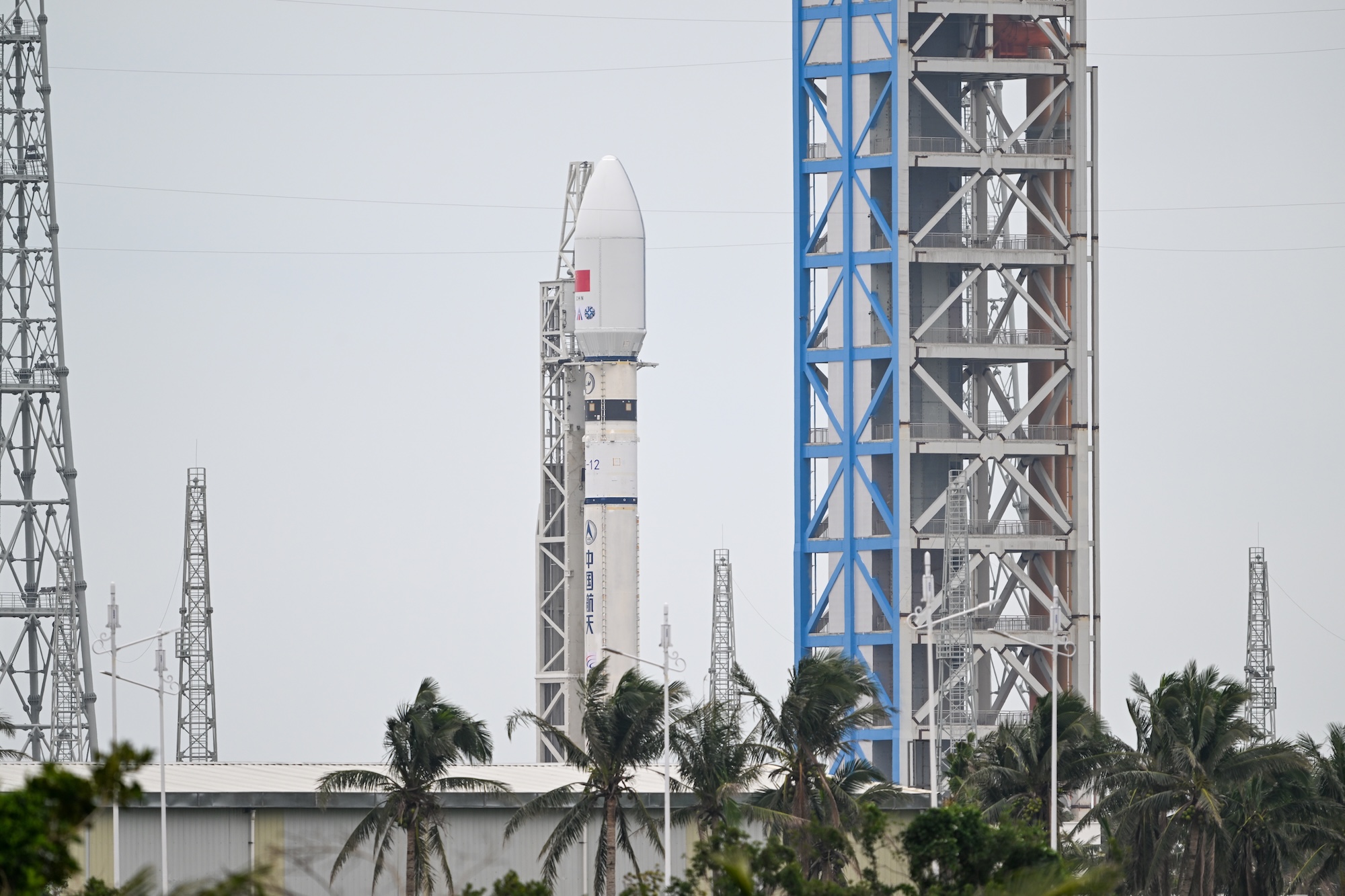2025 Lamborghini Urus SE first drive: The total taurean package
The original Urus was an SUV that nobody particularly wanted, even if the market was demanding it. With luxury manufacturers tripping over themselves to capitalize on a seemingly limitless demand for taller all-around machines, Lamborghini was a little late to the party.
The resulting SUV has done its job, boosting Lamborghini’s sales and making up more than half of the company’s volume last year. Even so, the first attempt was just a bit tame. That most aggressive of supercar manufacturers produced an SUV featuring the air of the company’s lower, more outrageous performance machines, but it didn’t quite deliver the level of prestige that its price demanded.
The Urus Performante changed that, adding enough visual and driving personality to make itself a legitimately exciting machine to drive or to look at. Along the way, though, it lost a bit of the most crucial aspect of an SUV: everyday livability. On paper, the Urus SE is just a plug-in version of the Urus, with a big battery adding some emissions-free range. In reality, it’s an SUV with more performance and more flexibility, too. This is the Urus’ Goldilocks moment.
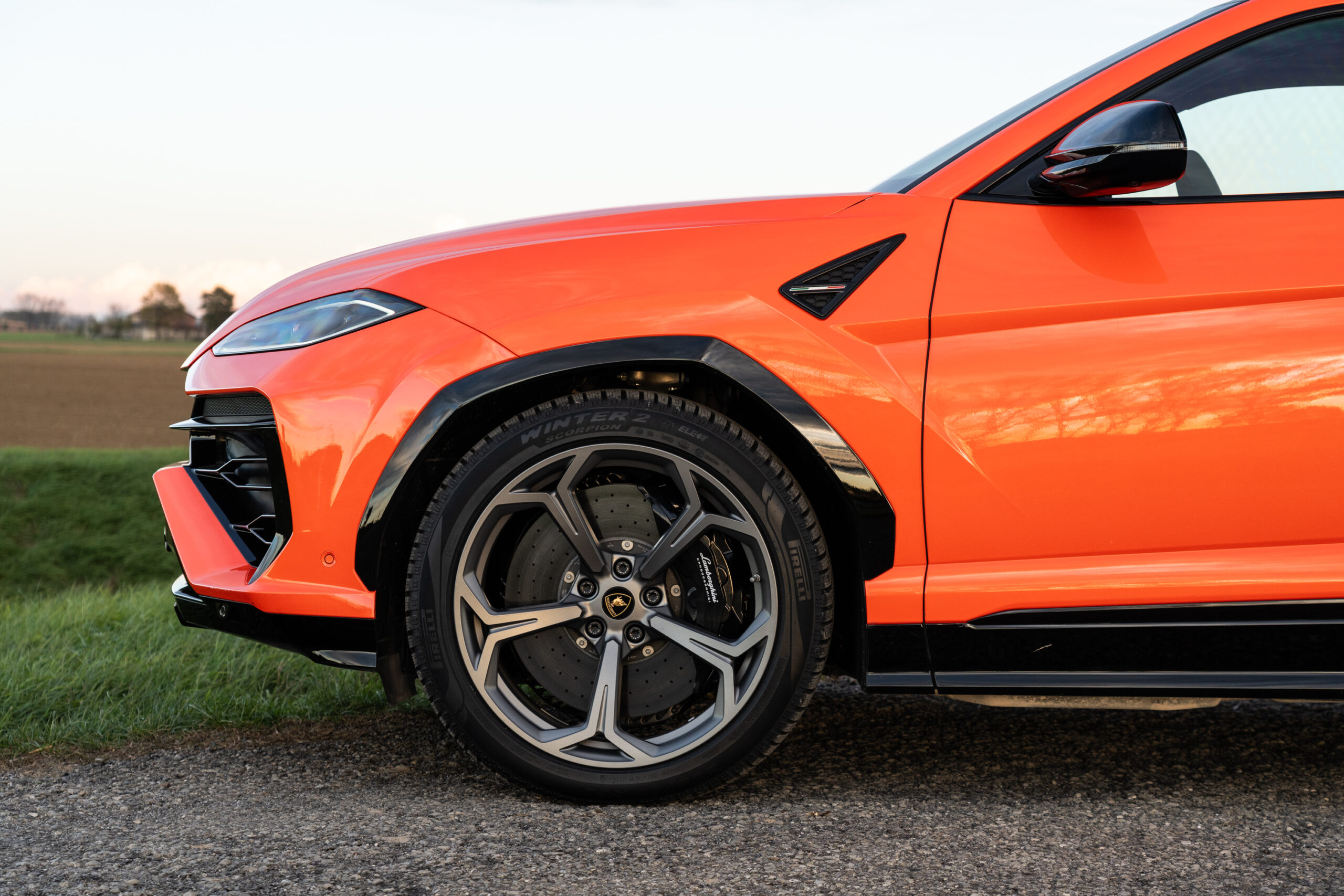
If you’re looking for something subtle, you shouldn’t be looking at an Urus. Credit: Tim Stevens
The what
The Urus SE starts with the same basic platform as the other models in the line, including a 4.0 L turbocharged V8 that drives all four wheels through an eight-speed automatic and an all-wheel-drive system.
All that has received a strong dose of electrification, starting with a 25.9 kWh battery pack sitting far out back that helps to offset the otherwise nose-heavy SUV while also adding a playful bit of inertia to its tail. More on that in a moment.
That battery powers a 189 hp (141 kW) permanent-magnet synchronous electric motor fitted between the V8 and its transmission. The positioning means it has full access to all eight speeds and can drive the car at up to 81 mph (130 km/h). That, plus a Lamborghini-estimated 37 miles (60 km) of range, means this is a large SUV that could feasibly cover a lot of people’s commutes emissions-free.

The V8 lives here. Credit: Tim Stevens
But when that electric motor’s power is paired with the 4.0 V8, the result is 789 hp (588 kW) total system power delivered to all four wheels. And with the electric torque coming on strong and early, it not only adds shove but throttle response, too.
Other updates
At a glance, the Urus SE looks more or less the same as the earlier renditions of the same SUV. Look closer, though, and you’ll spot several subtle changes, including a hood that eases more gently into the front fenders and a new spoiler out back that Lamborghini says boosts rear downforce by 35 percent over the Urus S.
Far and away the most striking part of the car, though, are the 22-inch wheels wrapped around carbon-ceramic brakes. They give this thing the look of a rolling caricature of a sport SUV in the best way possible. On the body of the machine itself, you’ll want to choose a properly eye-catching color, like the Arancio Egon you see here. I’ve been lucky to drive some pretty special SUVs over the years, and none have turned heads like this one did when cruising silently through a series of small Italian towns.
Things are far more same-y on the inside. At first blush, nothing has changed inside the Urus SE, and that’s OK. You have a few new hues of Technicolor hides to choose from—the car you see here is outfitted in a similarly pungent orange to its exterior color, making it a citrus dream through and through. The sports seats aren’t overly aggressive, offering more comfort than squeeze, but I’d say that’s just perfect.
Buttons and touchscreens vie with less conventional controls inside the Urus. Tim Stevens
But that’s all much the same as prior Urus versions. The central infotainment screen is slightly larger at 12.3 inches, and the software is lightly refreshed, but it’s the same Audi-based system as before. A light skinning full of hexagons makes it look and feel a little more at home in a car with a golden bull on the nose.
Unfortunately, while the car is quicker than the original model, the software isn’t. The overall experience is somewhat sluggish, especially when moving through the navigation system. Even the regen meter on the digital gauge cluster doesn’t change until a good half-second after you’ve pressed the brake pedal, an unfortunate place for lag.
The Urus SE offers six drive modes: Strada (street), Sport, Corsa (track), Sabbia (sand), Terra (dirt), and Neve (snow). There’s also a seventh, customizable Ego mode. As on earlier Urus models, these modes must be selected in that sequence. So if you want to go from Sport back to Strada, you need to cycle the mode selector knob five times—or go digging two submenus deep on the touchscreen.
Those can be further customized via a few buttons added beneath the secondary drive mode lever on the right. The top button enables standard Hybrid mode, where the gasoline and electric powertrains work together as harmoniously as possible for normal driving. The second button enters Recharge mode, which instructs the car to prioritize battery charge. The third and lowest button enters Performance mode, which gives you maximum performance from the hybrid system at the expense of charge.
Finally, a quick tug on the mode selector on the right drops the Urus into EV Drive.
Silent running
I started my time in the Urus SE driving into the middle of town, which was full of narrow streets, pedestrian-friendly speed limits, and aggressively piloted Fiats. Slow and steady is the safest way in these situations, so I was happy to sample the Urus’ all-electric mode.
To put it simply, it delivers. There’s virtually no noise from the drivetrain, a near-silent experience at lower speeds that help assuage the stress such situations can cause. The experience was somewhat spoiled by some tire noise, but I’ll blame that on the Pirelli Scorpion Winter 2 tires outfitted here. I can’t, however, blame the tires for a few annoying creaks and rattles, which isn’t exactly what I’d expect from an SUV at this price point.
Though there isn’t much power at your disposal in this mode, the Urus can still scoot away from lights and stop signs quickly and easily, even ducking through small gaps in tiny roundabouts.

It might not be subtle, but it can be practical. Credit: Tim Stevens
Dip more than three-quarters of the way into the throttle, though, and that V8 fires up and quickly joins the fun. The hand-off here can be a little less than subtle as power output surges quickly, but in a moment, the car goes from a wheezy EV to a roaring Lamborghini. And unlike a lot of plug-ins that stubbornly refuse to shut their engines off again when this happens, another quick pull of the EV lever silences the thing.
When I finally got out of town, I shifted over to Strada mode, the default mode for the Urus. I found this mode a little too lazy for my tastes, as it was reluctant to shift down unless I dipped far into the throttle, resulting in a bucking bull of acceleration when the eight-speed automatic finally complied.
The car only really came alive when I put it into Sport mode and above.
Shifting to Sport
Any hesitation or reluctance to shift is quickly obliterated as soon as you tug the drive mode lever into Sport. The SUV immediately forgets all about trying to be efficient, dropping a gear or two and making sure you’re never far from the power band, keeping the turbo lag from the V8 to a minimum.
The tachometer gets some red highlights in this mode, but you won’t need to look at it. There’s plenty of sound from the exhaust, augmented by some digital engine notes I found to be more distracting and unnecessary than anything. Most importantly, the overall feel of the car changes dramatically. It leaps forward with the slightest provocation of the right pedal, really challenging the grip of the tires.
In my first proper sampling of the full travel of that throttle pedal, I was surprised at how quickly this latest Urus got frisky, kicking its tail out with an eager wag on a slight bend to the right. It wasn’t scary, but it was just lively enough to make me smile and feel like I was something more than a passenger in a hyper-advanced, half-electric SUV.

Credit: Tim Stevens
In other words, it felt like a Lamborghini, an impression only reinforced as I dropped the SUV down to Corsa mode and really let it fly. The transmission is incredibly eager to drop gears on the slightest bit of deceleration, enough so that I rarely felt the need to reach for the column-mounted shift paddles.
But despite the eagerness, the suspension remained compliant and everyday-livable in every mode. I could certainly feel the (many) imperfections in the rural Italian roads more when the standard air suspension was dialed over to its stiffest, but even then, it was never punishing. And in the softest setting, the SUV was perfectly comfortable despite those 22-inch wheels and tires.
I didn’t get a chance to sample the SUV’s off-road prowess, but the SE carries a torque-vectoring rear differential like the Performante, which should mean it will be as eager to turn and drift on loose surfaces as that other, racier Urus.
Both the Urus Performante and the SE start at a bit over $260,000, which means choosing between the two isn’t a decision to be made on price alone. Personally, I’d much prefer the SE. It offers plenty of the charm and excitement of the Performante mixed with even better everyday capability than the Urus S. This one’s just right.
2025 Lamborghini Urus SE first drive: The total taurean package Read More »
